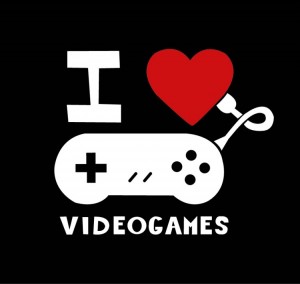Another interesting distinction in game genres or game types is that of Exergames. Broadly speaking ‘exergames’ are all games that are controlled by bodily movement. Think of a game of virtual tennis, bowling or raft racing (Wii) and games like Dance Dance Revolution.
“Recently videogames that use physical input devices have been dubbed “exergames” — games that combine play and exercise.” (Bogost, 2005)
 There was – and sometimes still is – concern that playing all these videogames is making us less physically active. Video games over the years have moved from the arcades of the 1970’s and 1980’s to desktops or game consoles in our living rooms, as well as to mobile platforms in our pockets. This means that we went from playing games (mostly) while standing up, slamming on big buttons and rattling a joystick to playing games (mostly) while sitting down and manipulating smaller buttons or keys with our fingertips (Bogost, 2005). By adding to our screen-time and our sedentary lifestyle, gaming was thought to be bad for our health and especially the health of our young people (Vandewater, Shim, & Caplovitz, 2004). In a time when the problem of child-obesity is of epidemic proportions, these concerns seem relevant. So eyes and hopes were turned to promoting a different method of game interaction; still on a screen but obliging the player to move around in order to control the game. Exergaming seems like a promising solution to the threat of sedentary gaming.
There was – and sometimes still is – concern that playing all these videogames is making us less physically active. Video games over the years have moved from the arcades of the 1970’s and 1980’s to desktops or game consoles in our living rooms, as well as to mobile platforms in our pockets. This means that we went from playing games (mostly) while standing up, slamming on big buttons and rattling a joystick to playing games (mostly) while sitting down and manipulating smaller buttons or keys with our fingertips (Bogost, 2005). By adding to our screen-time and our sedentary lifestyle, gaming was thought to be bad for our health and especially the health of our young people (Vandewater, Shim, & Caplovitz, 2004). In a time when the problem of child-obesity is of epidemic proportions, these concerns seem relevant. So eyes and hopes were turned to promoting a different method of game interaction; still on a screen but obliging the player to move around in order to control the game. Exergaming seems like a promising solution to the threat of sedentary gaming.
In order for all exergaming to work, some sort of sensoring is required. Sensors that can capture our bodily movements became more advanced and cheaper – making their way from research and therapeutic settings into peoples’ homes. Exergames are now used voluntarily in many living rooms, where the physical interaction is not viewed as ‘exercise’ but the whole game experience is viewed as entertainment.
Interacting with an exergame requires a certain expenditure of energy – more than a sedentary screen based interaction would – but not to the same amount as the original physical interaction that is being mimicked in the game environment (Daley, 2009).
References
Bogost, I. (2005). The rhetoric of exergaming. Proceedings of the Digital Arts and Cultures (DAC).
Vandewater, E. A., Shim, M.-s., & Caplovitz, A. G. (2004). Linking obesity and activity level with children’s television and video game use. Journal of adolescence, 27(1), 71-85.
Daley, A. J. (2009). Can exergaming contribute to improving physical activity levels and health outcomes in children? Pediatrics, 124(2), 763-771. doi: 10.1542/peds.2008-2357





